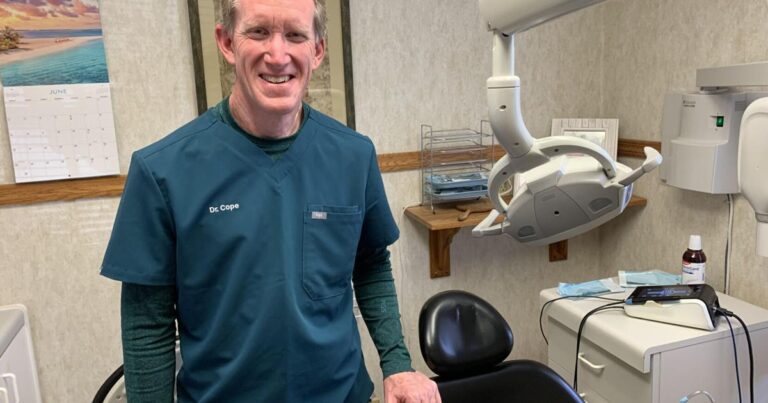Would you rather be trapped in an elevator with your boss, sleep in a haunted house, or have a root canal?
Take heart. While many would rather plunge into ice water than get a root canal, dentists have long known the truth: it’s no longer worth its bad rap.
“You shouldn’t be scared about it,” said Dr. Natalie Stinton, chair of the Department of Dentistry and Oral Surgery at Geisinger.
“In most cases it will make you feel better, almost immediately. It’s one of those things that I think people like to dramatize and hype as a very difficult, painful process, but it’s really not that bad.”
According to the American Association of Endodontists, a root canal removes the inflamed or infected pulp inside the tooth. The tooth is then cleaned, disinfected, filled and sealed to save the natural tooth.
Part of the credit for easier root canals today goes to improved tools, Dr. Stinton said. Microscopes, for example, allow the endodontist a close look at all the canals of the tooth. Rotarians have taken the place of manual filing.
“We have different devices to do things quickly instead of the multiple, hour-long processes that used to be,” he said.
“If the reason for root canal treatment is diagnosed early, the procedure is very effective and is no more traumatic than any other dental procedure commonly performed,” said Dr. James Cope, of Selinsgrove Dental Arts.
Root canals typically take between 75 and 90 minutes, said Dr. Andrew Chang, of West Branch Endodontics in Lewisburg, where he works with his wife and colleague, Dr. Laura Gecina.
“A root canal is a somewhat serious procedure,” Gecina admitted, “but one that specialized dentists — endodontists — are trained to handle every day,” Dr. Chang said. “Patients should feel no more nervous about having a root canal performed by a trained specialist than they would about getting a filling or a regular cleaning at their dentist’s office.”
Is a root canal painful? Not with anesthesia.
“With modern techniques and anesthetics, most patients report feeling comfortable throughout the procedure,” said Dr. Gecina.
“Although numbness may remain for two to four hours after the procedure, most patients can return to school or work directly after a root canal.”
A tooth can be difficult to numb if there is significant infection because the anesthetic works within a certain pH range in the surrounding tissues, Dr. Cope said.
“Often the patient will be treated with antibiotics first to reduce the amount of infection before the root canal procedure,” he added.
Depending on the type of root canal procedure, most treatments can be completed in one or sometimes two appointments, Dr. Chang said.
“Post-operative tenderness can be common for the first few days after the procedure, especially if there was pain or infection prior to the root canal,” said Dr. Gecina.
“Postoperative discomfort can usually be managed with over-the-counter or prescription anti-inflammatory medications.”
“Having some pain in the area is normal,” Dr. Stinton said.
“Sometimes it’s tenderness when you bite. Often, your jaw hurts a little for a day or two, and after the third day you feel better. If you’ve had significant pain with heat or cold, that will go away right after the root canal.”
It’s important to follow a proper permanent restoration to ensure the long-term success of the root canal, Gecina said.
“Sometimes a crown/cap may be recommended, depending on the position of the tooth or the size of the cavity/crack/chip before the root canal is completed,” he said.
In the end, with no pain and only a little discomfort, the root canal saves the teeth.
“I always like to tell my patients that it is difficult to artificially replace a part of our body that we were born with, so with that in mind, anything we can do to keep our natural teeth will allow for better overall health in the long run Cope said. “When performed correctly and effectively, a root canal can allow someone to keep their dentures much longer than they ever could in years past.”


